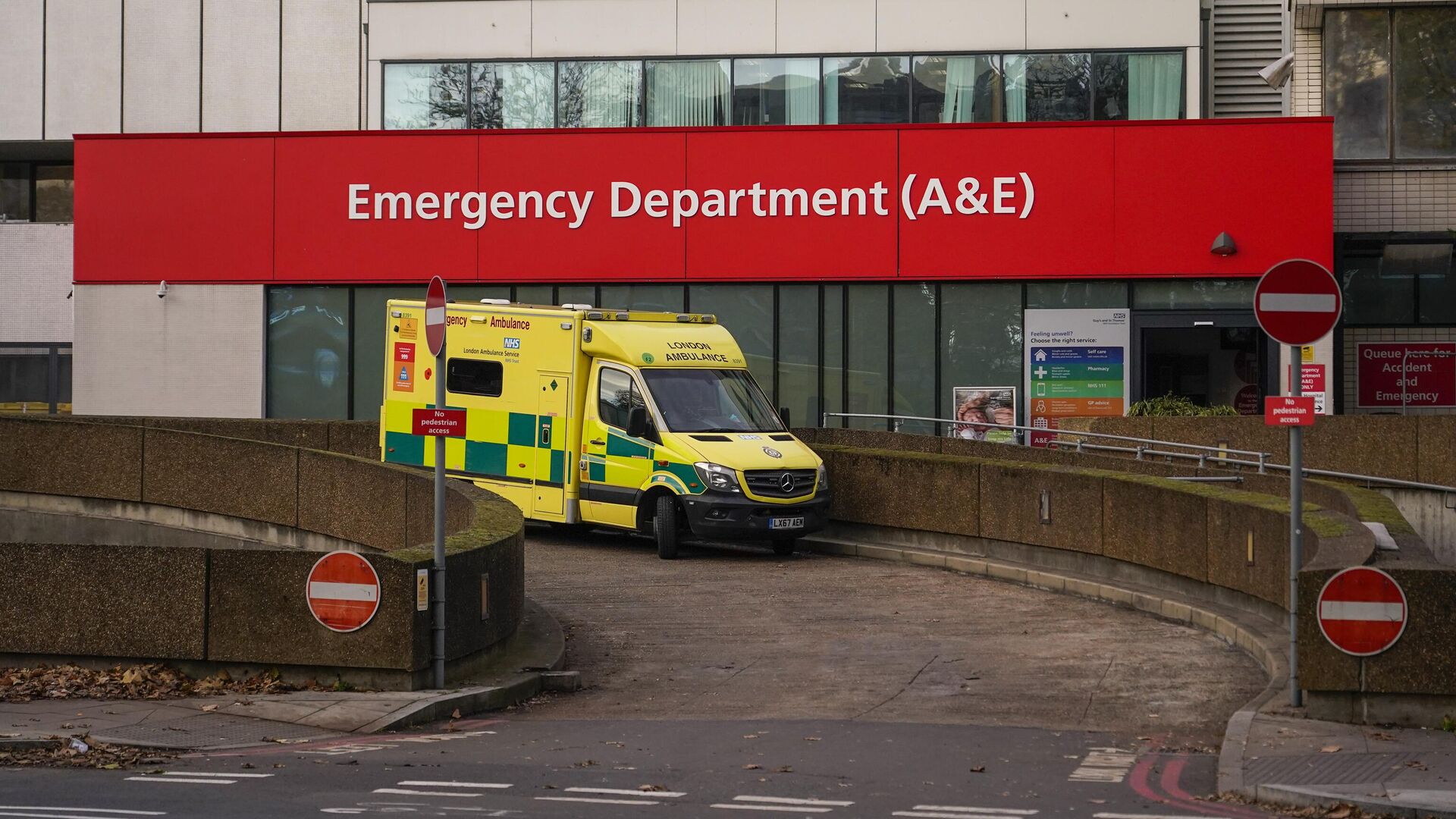https://sputnikglobe.com/20221201/uk-health-service-winter-war-rooms-go-live-as-demand-soars-and-strikes-loom-1104942039.html
UK Health Service's 'Winter War Rooms' Go Live as Demand Soars and Strikes Loom
UK Health Service's 'Winter War Rooms' Go Live as Demand Soars and Strikes Loom
Sputnik International
Britain's National Health Service (NHS) is weathering a storm of problems, ranging from an aging population, ever-rising emergency attendances, a huge backlog... 01.12.2022, Sputnik International
2022-12-01T17:30+0000
2022-12-01T17:30+0000
2023-05-28T15:25+0000
world
national health service (nhs)
britain
great britain
united kingdom (uk)
https://cdn1.img.sputnikglobe.com/img/07e6/0c/01/1104942127_0:208:3073:1936_1920x0_80_0_0_a8787639aa022c4fb715a94fad4e5727.jpg
UK health authorities have activated "war rooms" to help manage increased winter demand ahead of strikes by nurses and ambulance staff.The 42 National Health Service (NHS) "traffic control centres" will analyze data such as ambulance and Accident and Emergency (A&E) waiting times, day-to-day staffing levels and the number of free beds.That will allow them to direct emergency patients to hospitals with more resources to spare so they can be treated quicker.This autumn has already seen ten times as many flu cases admitted to hospital than at the same time in 2021, Powis explained, while thousands of beds are taken by patients who are well enough for discharge but lack the support they need to live independently or a place in a care home.Ambulance response times for life-threatening injuries or conditions averaged nine minutes 19 seconds in September — well short of the seven-minute target.But for serious cases like burns, epilepsy and strokes, the wait was 48 minutes — almost three times the aimed-for 18 minutes.Increasing numbers of A&E attendances over the past eight years — despite a drop-off during the COVID-19 pandemic — have seen ambulances forced to queue outside emergency departments to unload patients.The busy winter season comes just as healthcare workers are set to walk out over pay.The Royal College of Nursing (RCN) and two unions organizing paramedics and other ambulance service staff have voted for strike action in ballots over the past few weeks.Their members have rejected pay offers of five percent, less than half the Consumer Price Index (CPI) inflation rate of 11.1 percent.
https://sputnikglobe.com/20221130/first-uk-wide-ambulance-strike-in-30-years-looms-as-inflation-hits-pay-packets-1104883280.html
britain
great britain
united kingdom (uk)
Sputnik International
feedback@sputniknews.com
+74956456601
MIA „Rosiya Segodnya“
2022
James Tweedie
https://cdn1.img.sputnikglobe.com/img/07e4/08/1c/1080307270_0:3:397:400_100x100_80_0_0_7777393b9b18802f2e3c5eaa9cbcc612.png
James Tweedie
https://cdn1.img.sputnikglobe.com/img/07e4/08/1c/1080307270_0:3:397:400_100x100_80_0_0_7777393b9b18802f2e3c5eaa9cbcc612.png
News
en_EN
Sputnik International
feedback@sputniknews.com
+74956456601
MIA „Rosiya Segodnya“
Sputnik International
feedback@sputniknews.com
+74956456601
MIA „Rosiya Segodnya“
James Tweedie
https://cdn1.img.sputnikglobe.com/img/07e4/08/1c/1080307270_0:3:397:400_100x100_80_0_0_7777393b9b18802f2e3c5eaa9cbcc612.png
uk health service, uk doctors strike, why medics strike in uk, uk strikes, nhs strikes, nhs traffic control centres, nhs winter war rooms, what are nhs winter war rooms,
uk health service, uk doctors strike, why medics strike in uk, uk strikes, nhs strikes, nhs traffic control centres, nhs winter war rooms, what are nhs winter war rooms,
UK Health Service's 'Winter War Rooms' Go Live as Demand Soars and Strikes Loom
17:30 GMT 01.12.2022 (Updated: 15:25 GMT 28.05.2023) Britain's National Health Service (NHS) is weathering a storm of problems, ranging from an aging population, ever-rising emergency attendances, a huge backlog of non-urgent cases stemming from the COVID-19 pandemic and difficulties in recruiting medical staff.
UK health authorities have activated "war rooms" to help manage increased winter demand ahead of strikes by nurses and ambulance staff.
The 42 National Health Service (NHS) "traffic control centres" will analyze data such as ambulance and Accident and Emergency (A&E)
waiting times, day-to-day staffing levels and the number of free beds.
That will allow them to direct emergency patients to hospitals with more resources to spare so they can be treated quicker.
"These locally delivered control centres are just one part of our wide-ranging preparations for winter but will play a vital role in the sharing and use of vital information to drive smarter decision-making by local NHS teams," said NHS National Medical Director Professor Sir Stephen Powis.
This autumn has already seen ten times as many flu cases admitted to hospital than at the same time in 2021, Powis explained, while thousands of beds are taken by patients who are well enough for discharge but lack the support they need to live independently or a place in a care home.
"It has never been more important for the NHS to introduce these important and innovative planning measures ahead of what is likely to be one of our most challenging winters yet," the professor stressed.
Ambulance
response times for life-threatening injuries or conditions averaged nine minutes 19 seconds in September — well short of the seven-minute target.
But for serious cases like burns, epilepsy and strokes, the wait was 48 minutes — almost three times the aimed-for 18 minutes.
Increasing numbers of A&E attendances over the past eight years — despite a drop-off during the COVID-19 pandemic — have seen ambulances forced to queue outside emergency departments to unload patients.

30 November 2022, 14:29 GMT
The busy winter season comes just as healthcare workers are set to walk out over pay.
The
Royal College of Nursing (RCN) and two unions organizing paramedics and other ambulance service staff have voted for strike action in ballots over the past few weeks.
Their members have rejected pay offers of five percent, less than half the Consumer Price Index (CPI)
inflation rate of 11.1 percent.






